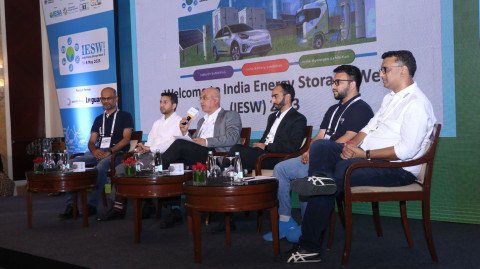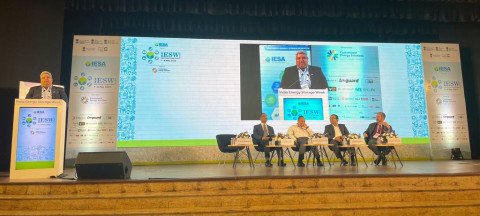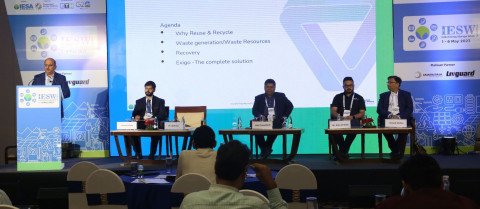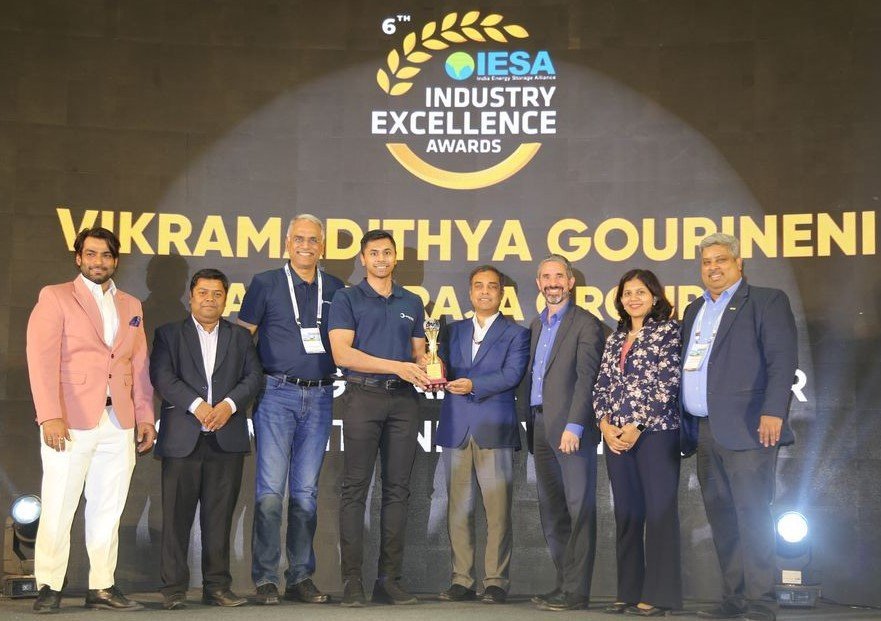At the on-going IESW 2023, Vikramadithya Gourineni, Executive Director - Amara Raja Batteries, spoke to Dhiyanesh Ravichandran of ETN on his experiences at the latest edition of India Energy Storage Week (IESW), trends in the energy storage space in India, and government's efforts to promote clean energy technologies in the country.
Amara Raja Batteries is here at the IESW to showcase some of our latest products including a variety of battery packs for EVs and stationary storage, BMS, EV chargers, and so on. IESW is a great platform to meet and connect with a variety of suppliers and customers in the industry. It is certainly a great opportunity for us exhibit our products and connect with people.
What are the market segments in the EV and energy storage space that you find interesting from a business and investments point of view?
Certain market segments like E2Ws, E3Ws, and light commercial vehicles are really doing great, not just with the incentive framework, but also because there exists a strong use-case and economic sense clearly working out. This is significant, as segments that are getting electrified may not turn back. Some segments may go step-by-step, while certain others may take leap far ahead.

IESW 2023: Taking a grip of emerging Technological megatrends
What is your assessment of Indian government's efforts to promote clean energy and progress to achieve net-zero targets on time?
The government is certainly showing a positive intent; it wants to bring new technologies and find means and ways to enable it. Perhaps, we have our own reasons to believe that the first edition of the ACC PLI scheme was not as enabling as they could have been. Especially when we compare with other countries are incentivizing the industries – the US Inflation Reduction Act, for instance. Of course, the quantum is very different in terms of affordability, but the comparison is always going to be there. So, we need to invest as much as other countries, and start enabling and incentivizing the ecosystem requirements of the clean energy industries.
Let's just say that all of us are establishing gigafactories, but if we don't have cathode, anode or any other critical supplies locally available in India, the scenario would be very terrible. We may want to avoid the same pitfalls we fell into in other industries like solar, for instance. We need to find ways to bring raw materials into India, I think that a PLI scheme for components is as equally important as PLI for an end product.

IESW 2023: Another Renewables wave coming, Storage industry primed for take-off!
What are the key dilemmas faced by an investor looking to invest in clean energy right now?
Broadly I can think of three challenges. First, I would say that India is different from advanced economies, we are trying to advance e-mobility at time when our vehicle penetration is relatively very low and highly price sensitive. So, we cannot put all our eggs in the new energy basket. We may have to keep serving the traditional business markets that we already have, as complete transition to new energy would take time. We also have to interplay with a variety of technologies while exploring new energy.
RELATED: Amara Raja bags NTPC contract for India's first green hydrogen fuelling station in Leh
Second challenge is availing the required talent for new energy. As these technologies are new, there is no readymade talent and skill base available in India. Skilling initiatives and academics may take time to catch up to create readily usable talent sets by industry. Bringing global talents and professionals on board is also challenging because of limited availability.
Third, geopolitics is on a huge flux today. The disruption in global supply chains is resulting in creating of different blocs that are forming their own supply chains. India needs to build up its own critical supply ecosystem.

IESW 2023: Battery reuse and recycling in India - What's holding us back?
Read More

